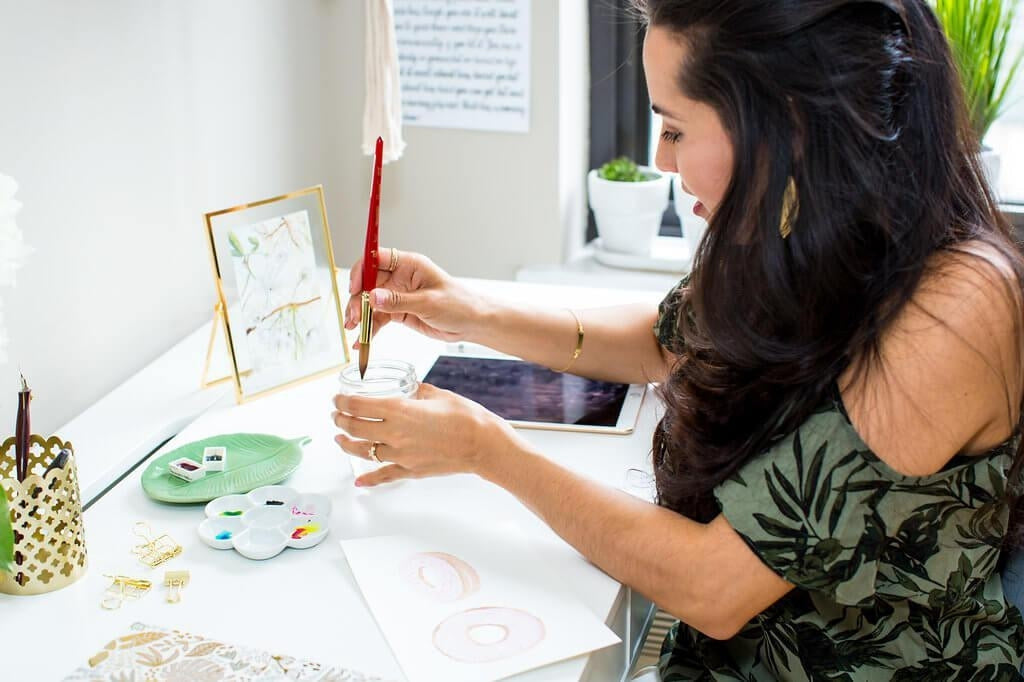
3 COMMON PROBLEMS (AND SOLUTIONS) WHEN WORKING WITH WATERCOLOR
Watercolors are inexpensive, easy to clean up after, and can lead to breathtaking effects without much practice. It’s no surprise that they’re one of the most popular mediums for beginner artists, but they can also be one of the most unforgiving and difficult to master.
Unwanted borders and dark edges
One the big draws of working with watercolors is the ease of creating smooth blends and gradients, so it can be frustrating to end up with dark borders forming between colors as your work dries. Ironically, it’s often the fluidity of the paint that causes the problem.
When you add too much water or re-apply water to an area before it fully dries, it lets the pigment in the paint naturally flow outward. You end up with a light center and stark borders. This can be a useful technique when done intentionally but can cause inconsistent coloring if you aren’t careful.
Solutions
- Practice with different amounts of water to get an idea of how much you need to use to get the look your aiming for.
- Keep some paper towels or an absorbent brush nearby to gently sop up any excess water.
- If you aren’t happy with how the pigments have settled once it dries, you can rewet an area to get them flowing again and rework the area.
Making Mud
An important rule of working with watercolors is to start with light shades and build up to darker hues layer by layer. Each new coat can add depth to your hues but if you aren’t careful and deliberate, you can quickly end up with unwanted shades of brown and grey muddying up your once vibrant colors.
Mixing watercolors is tricky and mixing too many layers can get dreary fast. Keep it as simple as you can until you have a solid handle on how different colors blend together. Make sure to also let each section fully dry before moving on to a nearby piece, or your pigments will end up flowing into each other and becoming murky.
Solutions
- Don’t try to blend too many different colors. Start simple and experiment on separate paper if you aren’t sure how a particular color will mix.
- Replace your water frequently. Murky water can pollute any color in a way that isn’t always obvious until it’s too late.
- More opaque paints will more easily lead to muddy paintings, more translucent paints are more forgiving.
Starting without a plan
Acrylic and oil paints have their own challenges, but you can often fix any mistake by simply painting over it. Watercolors are far more transparent, so covering things up – including hard sketch lines – isn’t usually an option.
Whites can also be a real point of frustration for artists working with watercolor. Almost all of the white in a painting has to come from the paper itself, and it can be next to impossible to salvage a white section once it’s been painted over.
Suggestions
- Have a detailed plan before you begin, taking special note of what sections will remain white.
- If you start with a sketched outline, use very light pencil lines so they don’t show through the paint.
- You can remove some paint even after it dries by wetting the area and getting sopping it up with a paper towel or absorbent brush.



